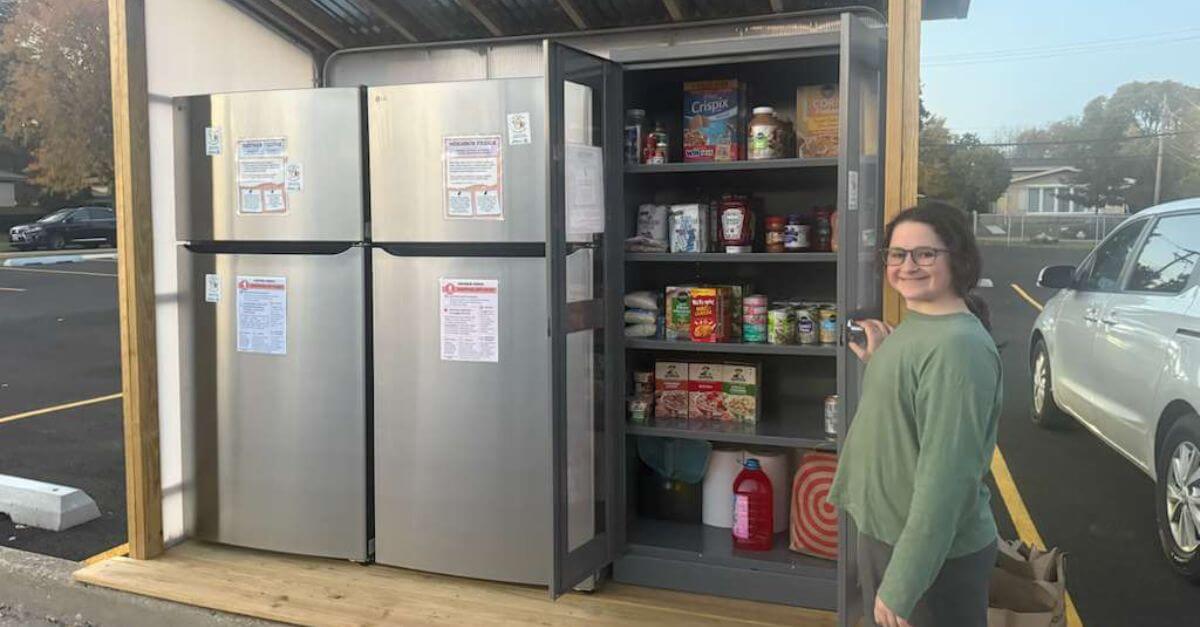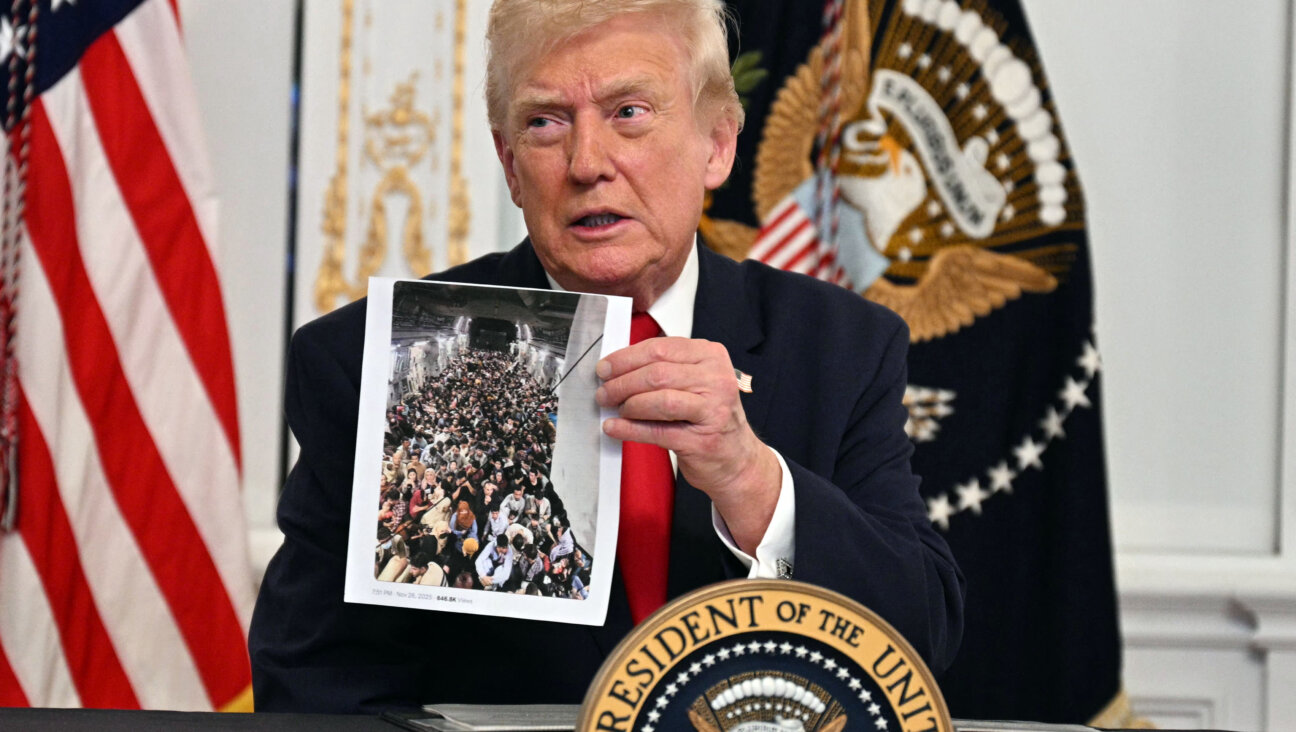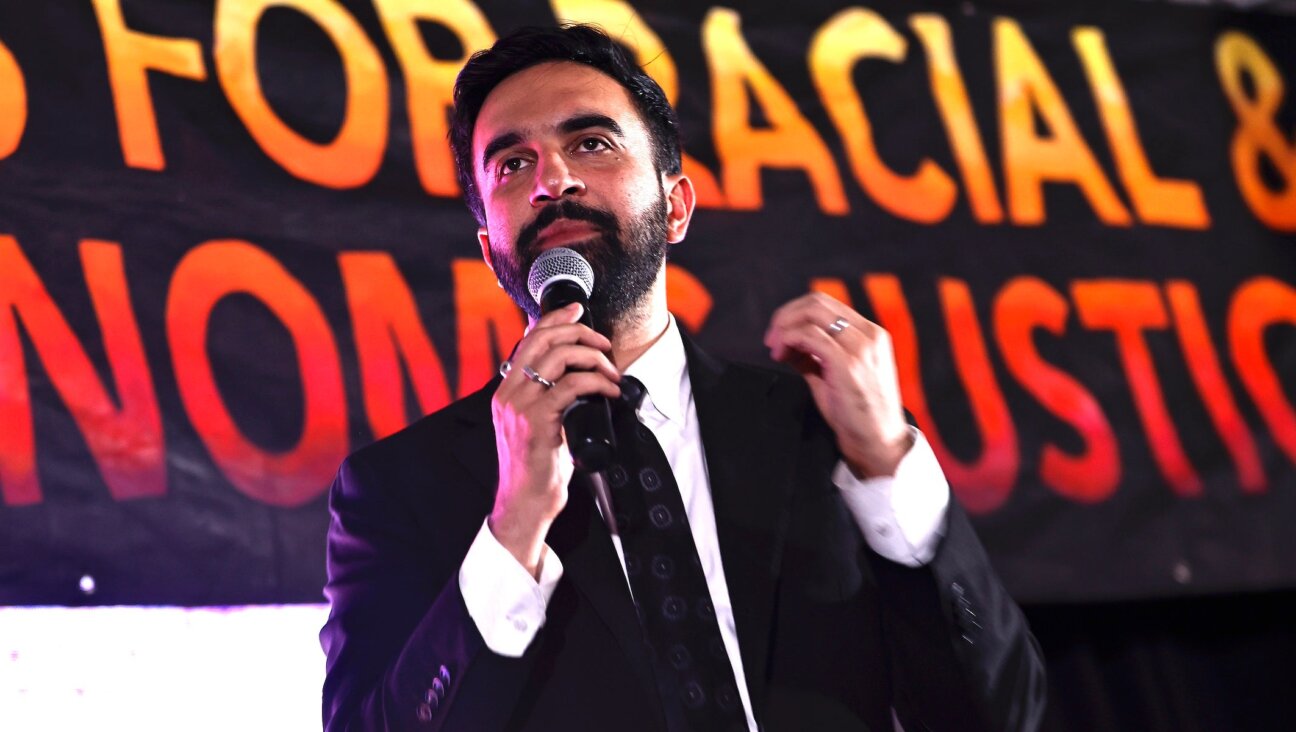‘Mitzvah Projects’ Fuse Creativity and Community
When Sara Charmé-Zane, 13, reminisces about her bat mitzvah, she doesn’t prattle on about disc jockeys. Or outfits. Or presents.
After being encouraged by her rabbi to do a “mitzvah project” to mark the rite of passage, she was uninspired by the idea of simply writing a check to a charity. So she began thinking more creatively, searching for a project that would be meaningful to both herself and her community.
The result is a 4-foot-square mosaic of the Hebrew word “Shalom,” a dove and a tree that Charmé-Zane designed and created for display in her Reconstructionist synagogue, which is housed in a former warehouse in need of beautification outside of Philadelphia. The project — to which she devoted months, including an unfortunate redo when the mosaic got wet and the tiles fell off — is what she talks about when asked about her bat mitzvah last June.
“A lot of people don’t really look at it as a mitzvah project,” said Charmé-Zane of the reaction many had on hearing of her unconventional venture. But Charmé-Zane, who also made the prayer shawl she wore for the service, said that art can give back to a community as much as traditional service projects.
“If you can give someone just a moment of feeling really happy, or seeing something really beautiful, that’s a great gift to give,” she said.
New books are examining trends in American bar and bat mitzvah celebrations, and they are concluding that Charmé-Zane’s experience is becoming more the norm than the fancy fêtes of yore.
From families forgoing printed invitations in favor of online invites to make an environmental statement, to re-creating a Jerusalem street scene to celebrate Israel, Jewish values are infusing every aspect of bar and bat mitzvah experiences, not only those parts that take place in the synagogue.
This is the message of Lori Weinrott and Jayne Cohen’s new book, “The Ultimate Bar/Bat Mitzvah Celebration Book: A Guide to Inspiring Ceremonies and Joyous Festivities” (Clarkson Potter).
The book, a how-to party-planning manual with a Jewish touch, urges families to learn from others and take advantage of a moment ripe with the potential to be a beginning of a meaningful Jewish life.
Weinrott and Cohen detail stories from parties that take as their themes the child’s Torah portion — not basketball or movies — to large-scale donations of sporting goods to needy schools or food to homeless shelters. The authors say that in interviewing families for the book, they found a yearning among children and parents for Jewish meaning and a connection with the Jewish community at large, rather than a display of wealth.
“Mitzvah projects” have become common in many Jewish circles. Mazon: A Jewish Response to Hunger is a charity that partners with the Reform, Conservative and Reconstructionist movements, as well as some Modern Orthodox synagogues, to encourage bar and bat mitzvah students to donate 3% of the money they receive as gifts to the cause. While donations such as these continue, many young Jews also choose to take on more significant projects as a way to become part of the greater community in a meaningful way.
Americans are “finding ways to make Judaism a more authentically shared and a more authentically felt experience,” said Cohen, a Conservative Jew who is also a professional food and culture writer.
But some scholars worry that too much of a focus on traditional or simplistic mitzvah projects could equate Judaism with social justice in a child’s mind without contextualizing good deeds in the larger framework of Jewish religious life.
“The danger is that it can lead to thinking of Judaism as monetary giving rather than as a godly way to live one’s life,” said Mark Oppenheimer, the author of a forthcoming book about bar and bat mitzvahs in America, to be published by Farrar, Straus and Giroux.
But for many, preparing a mitzvah project, whether alone or in “teams” that enhance the sense of community for the children, is a way to put Jewish values into practice.
And when it comes to planning the party, those values do not have to fall by the wayside. Families are working together to create festivities that celebrate their connection to the Jewish community.
“We never want to impose what that connection is,” said Weinrott. “It has to come from within themselves.” The owmer of a kosher catering company in Philadelphia, Weinrott said this connection could take any form, from taking decorating ideas directly from a biblical passage to arranging for smaller tables that encourage genuine conversations.
Weinrott and Cohen advise readers to make decisions as a family and allow their children’s Jewish learning to bring insight to the endeavor.
“Start talking to each other and dealing with the whole bar mitzvah question early,” said Cohen. “If the parents foster that kind of atmosphere, where they started exploring all those Jewish things together, many of the ideas are likely to come out of that.”
Weinrott, for example, adopted a Hebrew name at the same time as her daughter when the family prepared for her son’s bar mitzvah. It was a powerful moment for Weinrott, who had been raised at a time when girls were not given Hebrew names.
American Jews often say that they want to connect with or return to “tradition,” but sometimes those “traditions” are not as old as they think.
It wasn’t until the 19th century that the bar mitzvah as we know it spread through Europe, said Ivan G. Marcus, a professor of Jewish history at Yale University.
Marcus, whose forthcoming book, “The Jewish Life Cycle from Biblical to Modern Times” (University of Washington Press), contains a chapter on bar and bat mitzvahs, said that although some kind of bar mitzvah was observed as early as the 16th century, it wasn’t until late-19th-century Germany and New York that bar mitzvah celebrations became prevalent. The bat mitzvah did not debut until 1922.
Yet hovering around the history of the ceremony is a fact that many American Jews may not know.
“The truth is, a bar mitzvah is not a ritual, it is just a moment in time,” said Marcus, referring to the fact that at the moment when a boy turns 13 years old plus one day, a girl 12, he or she becomes responsible for observing all of the 613 commandments of Jewish law. There is no Jewish mandate that there be a Torah reading or public ceremony; in fact, there is no theological basis for it, according to Marcus. Instead, he said, the tradition developed over time.
“It has to do with the notion of the development of childhood and adulthood,” he said, adding that this idea has taken different manifestations in different cultures. In Yemen, for example, boys put on tefillin and perform commandments such as waving a lulav on Sukkot when they are “ready,” at whatever age that might be.
“The nice thing about tradition is that it keeps evolving,” Marcus said. “Tradition is the ongoing engagement with earlier texts, sources and practices. Every single life cycle event has this pattern” of developing and changing through time.
Not that the “tradition” of lavish celebrations is a thing of the past. Cohen says that for cases in which elderly grandparents are not likely to live to see their grandchildren married, it is both appropriate and moving to have an extravagant bar mitzvah celebration, accompanied of course by a sizable donation to charity.
Cohen adds that the concept of hiddur mitzvah, or beautifying the commandments, suggests that making an event beautiful enhances the appreciation and meaning of the occasion.
“It can be a wonderful, wonderful thing,” she said. “I don’t think that it’s wrong, providing that it’s done very tastefully.”
Holly Lebowitz Rossi is a freelance writer living in Arlington, Mass.














